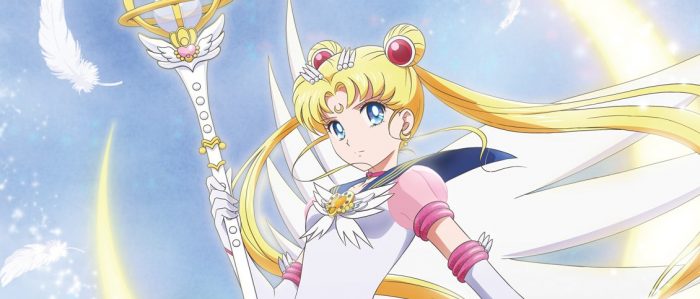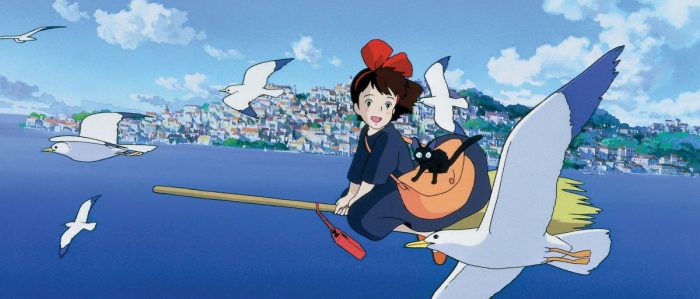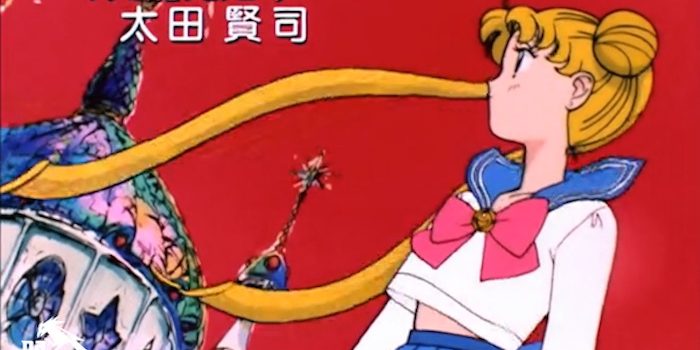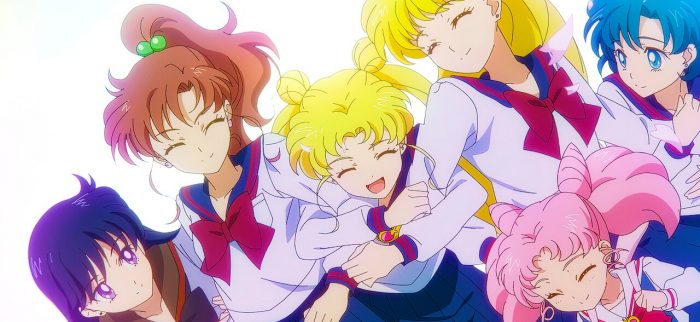Why ‘Sailor Moon’ and the Magical Girl Anime Still Matter Today

There’s something magical about the magical girl anime. The genre that birthed beloved classics like Sailor Moon and Cardcaptor Sakura, and to which shows like The Powerpuff Girls owe their inspiration, the magical girl anime has always presented a different kind of hero than the “woman warrior” that is so prevalent in pop culture. Rather than a sword or a tomboyish attitude, they’re allowed to wield their femininity as their power — sometimes literally, like when Sailor Moon throws her tiara like boomerang, or Sakura’s friend Tomoko makes her a frilly outfit as her battle armor. Amidst the male-dominated anime world — and really, the action genre at large — these magical girls are an oasis for viewers who wanted to see their heroes cry, fail at sports, and snooze in class, before transforming into a glamorous, all-powerful warrior.
With the massive global success of Sailor Moon in the ’90s, the magical girl anime reached its apex. Buoyed by the “girl power” movements at the time, the magical girl became just as synonymous with the messages of female empowerment and self-resilience as the riot grrrls in the West. But as ideas about feminism evolved in the late 2000s and early 2010s, the magical girl mostly disappeared from public view. That is, until Pretty Guardian Sailor Moon Eternal, the two-part feature film that follows up the reboot anime Sailor Moon Crystal, hit Netflix and visions of girl power in miniskirts and heels came flooding back. Does the buzzy debut of Sailor Moon Eternal on Netflix this past weekend herald the return of the magical girl anime? Maybe, maybe not, but its return does remind us of why the magical girl anime has retained its enduring power.

What is the Magical Girl Anime?
The magical girl anime can be traced back to the most basic form of a magical girl: the witch. Specifically, Sally the Witch, a 1966 anime television series produced by Toei Animation which followed the adventures of a little princess from the Magic Kingdom who arrives in the world of humans in the guise of a girl named Yumeno Sally and earns attention for her special powers. According to the creator of Sally the Witch, the plot was inspired by the popular American sitcom Bewitched, but its distinction as the first Japanese animation series specifically targeting young girls would unwittingly create a whole genre.
The magical girl anime would evolve in the decades following, with the 1969 anime series Himitsu no Akko-chan (The Secret of Akkochan) introducing the concept of magical transformation via a special compact mirror, and Toei’s Majokko shows from the ’70s coining the term “majokko (little witch)” for the genre. “A certain coquettishness” emerged from the protagonists of the era, according to Nippon.com, referring to a form of female empowerment divorced from appealing to men through sex appeal.
All this led to the modern version of the magical girl (the term first coined by the 1980 anime Lalabel, the Magical Girl), who began to emerge out of the animes in the ’80s, which followed young girls who — through the power of magic — would transform into glamorous grown women and solve problems that men could not.

Magical Girls and the “Strong Female Character”
The magical girl anime had its heyday in the ’90s, with Sailor Moon leading the charge. Created by Naoko Takeuchi, Sailor Moon was a sensational success which followed the travails of Usagi Tsukino (American DiC dub watchers probably know her as Serena), a clumsy, crybaby junior schoolgirl who discovers she’s the reincarnation of a mythic princess of the Moon Kingdom and is tasked with defending the Earth from the forces of evil as the magical warrior Sailor Moon. Aided by a talking cat and a group of fellow reincarnated schoolgirl warriors, Sailor Moon gradually accepts her mission and becomes Earth’s greatest defender — and looks great doing it.
That Sailor Moon blew up as it did in the ’90s, the era of grunge and riot grrrls, is kind of a miracle. As a heroine, Usagi is the exact opposite of what you’d expect from Earth’s protector: she’s dumb, she’s prone to pratfalls and tantrums, and she loves a new jewelry set more than she cares about the world. But she presented a kind of soft femininity that you rarely saw in ’90s heroines like Xena or even the more feminine warriors like Buffy (who, let’s be honest, shares more than a little DNA with the magical girl). Usagi was allowed to cry and be frightened — it was the belief in her friends and her compassion that made her strong. Even though Sailor Moon had a male lead and romantic interest in the form of Tuxedo Mask, he was so increasingly incompetent (apart from his talent for a bad quip) that the show even started joking about it.
And manga author Takeuchi’s interest in haute couture fashion led to the show’s singular sense of style — with the characters often wearing clothes right off the runway, or showing off the latest streetwear, which only further appealed to the young girls watching the show. Fashion was power for Sailor Moon, in her aforementioned tiara boomerang, but also in the heels her fellow Sailor Scouts wore while fighting off baddies, and in the pendants and scepters that yielded massive beams of energy that blasted their foes off the face of the Earth. Sailor Moon might have been able to throw a punch (sometimes) like the many “strong female characters” that populated the screens in the ’90s and early 2000s, but it wasn’t the fighting that made young girls love the show. It was the characters, their clothes, and the deep female friendships that they shared (even between cousins).

Sailor Moon, Eternal
The magical girl anime didn’t die out with Sailor Moon; other shows like the highly underrated and extremely cute Cardcaptor Sakura, the female-oriented reboot Cutie Honey Flash, and traditional witch series like Tweeny Witches and Little Witch Academia would follow. But never would another magical anime achieve the same pop culture dominance of Sailor Moon. It was a show both of its time, and ahead of its time. The miniskirts and bikinis did sometimes get a little too leery, and there’s something to be said about how the villains fell into the fairy tale tropes of being powerful older women and hags. But that tight-knit bond of complicated female friendship between its characters have rarely been replicated in another commercial hit.
Sailor Moon remains a classic for many reasons: it’s a cornerstone of girl empowerment in pop culture, it was ahead of its time in portraying LGBTQ characters and themes (which could take a whole other essay to get into), and Sailor Moon Eternal has a memory of that. The feature film, which adapts the “Dream” arc of Takeuchi’s manga, pays homage to the female friendships, the fashion, the camp of the original series while looking ahead to where the magical girl anime could go. Although coming back to this story after nearly two decades made me feel the creakiness of Sailor Moon, especially late-stage Sailor Moon and those very over-the-top villains, it made me realize the magical girl anime is far from over. At some point or another, she’ll be rebirthed again, more glamorous and powerful than ever.
***
Sailor Moon Eternal Parts 1 and 2 are streaming on Netflix now.
The post Why ‘Sailor Moon’ and the Magical Girl Anime Still Matter Today appeared first on /Film.
from /Film https://ift.tt/3gfSQoE
No comments: